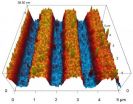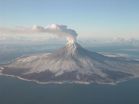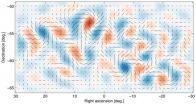(Press-News.org) Did the Polynesians beat Columbus to South America? Not according to the tale of migration uncovered by analysis of ancient DNA from chicken bones recovered in archaeological digs across the Pacific.
The ancient DNA has been used to study the origins and dispersal of ancestral Polynesian chickens, reconstructing the early migrations of people and the animals they carried with them.
The study, led by the University of Adelaide's Australian Centre for Ancient DNA (ACAD) and published today in Proceedings of the National Academy of Sciences USA, reveals that previous claims of contact between early Polynesians and South America were probably based on contaminated results. Instead, the new study has identified and traced a unique genetic marker of the original Polynesian chickens that is only present in the Pacific and Island Southeast Asia.
The research team of national and international collaborators, including Australian National University, University of Sydney, and Durham and Aberdeen Universities in the UK, used female-inherited mitochondrial DNA extracted from chicken bones excavated in archaeological digs from islands including Hawaii, Rapa Nui (Easter Island) and Niue.
"We have identified genetic signatures of the original Polynesian chickens, and used these to track early movements and trading patterns across the Pacific," says lead author Dr Vicki Thomson of ACAD. "We were also able to trace the origins of these lineages back into the Philippines, providing clues about the source of the original Polynesian chicken populations."
Associate Professor Jeremy Austin, ACAD Deputy Director, says: "There are still many theories about where the early human colonists of the remote Pacific came from, which routes they followed and whether they made contact with the South American mainland. Domestic animals, such as chickens, carried on these early voyages have left behind a genetic record that can solve some of these long standing mysteries."
Project leader Professor Alan Cooper, Director of ACAD says: "We were able to re-examine bones used in previous studies that had linked ancient Pacific and South American chickens, suggesting early human contact, and found that some of the results were contaminated with modern chicken DNA, which occurs at trace levels in many laboratory components," says ACAD Director Professor Alan Cooper. "We were able to show that the ancient chicken DNA provided no evidence of any pre-Columbian contact between these areas."
"Remarkably, our study also shows that the original Polynesian lineages appear to have survived on some isolated Pacific islands, despite the introduction of European domestic animals across the Pacific in the last couple of hundred years," Professor Cooper says. "These original lineages could be of considerable importance to the poultry industry which is concerned about the lack of genetic diversity in commercial stocks."
INFORMATION:
Media Contact:
Professor Alan Cooper
Director, Australian Centre for Ancient DNA (ACAD)
The University of Adelaide
Phone: +61 8 8313 5950 Mobile: +61 406 383 884
alan.cooper@adelaide.edu.au
Dr Vicki Thomson
Research Associate, ACAD
The University of Adelaide
Phone: +61 8 8313 8242
Mobile: +61 413 743 167
vicki.thomson@adelaide.edu.au
Assoc Prof Jeremy Austin
Deputy Director, ACAD
The University of Adelaide
Phone: +61 8 8313 4557
Mobile: +61 404 198 493
jeremy.austin@adelaide.edu.au
Robyn Mills
Media Officer
The University of Adelaide
Phone: +61 8 8313 6341
Mobile: +61 410 689 084 robyn.mills@adelaide.edu.au
Chicken bones tell true story of Pacific migration
2014-03-18
ELSE PRESS RELEASES FROM THIS DATE:
Hubble revisits the Monkey Head Nebula for 24th birthday snap
2014-03-18
To celebrate its 24th year in orbit, the NASA/ESA Hubble Space Telescope has released a beautiful new image of part of NGC 2174, also known as the Monkey Head Nebula. This colourful region is filled with young stars embedded within bright wisps of cosmic gas and dust.
NGC 2174 lies about 6400 light-years away in the constellation of Orion (The Hunter). Hubble previously viewed this part of the sky back in 2001, creating a stunning image released in 2011, and the space telescope has now revisited the region to celebrate its 24th year of operation.
Nebulae are a favourite ...
Crop intensification and organic fertilizers can be a long-term solution to perennial food shortages in Africa
2014-03-18
Farmers in Africa can increase their food production if they avoid over dependence on chemical fertilizers, pesticides and practice agricultural intensification - growing more food on the same amount of land – using natural and resource-conserving approaches such as agroforestry.
According to scientists at the World Agroforestry Centre (ICRAF), crop production in Africa is seriously hampered by the degradation of soil fertility, water and biodiversity resources. Currently, yields for important cereals such as maize have stagnated at 1 tone per hectare. Climate change ...
Researchers change coercivity of material by patterning surface
2014-03-18
Researchers from North Carolina State University have found a way to reduce the coercivity of nickel ferrite (NFO) thin films by as much as 80 percent by patterning the surface of the material, opening the door to more energy efficient high-frequency electronics, such as sensors, microwave devices and antennas.
"This technique reduces coercivity, which will allow devices to operate more efficiently, reducing energy use and improving device performance," says Goran Rasic, a Ph.D. student at NC State and lead author of a paper describing the work. "We did this work on NFO ...
New research links body clocks to chronic lung diseases
2014-03-18
The body clock's natural rhythm could be utilized to improve current therapies to delay the onset of chronic lung diseases.
Scientists at The University of Manchester have discovered a rhythmic defence pathway in the lung controlled by our body clocks, which is essential to combat daily exposure to toxins and pollutants.
Internal biological timers (circadian clocks) are found in almost all living things driving diverse processes such as sleep/wake cycles in humans to leaf movement in plants. In mammals including humans, circadian clocks are found in most cells and ...
Earthquakes caused by clogged magma a warning sign of eruption, study shows
2014-03-18
New research in Geophysical Research Letters examines earthquake swarms caused by mounting volcanic pressure which may signal an imminent eruption. The research team studied Augustine Volcano in Alaska which erupted in 2006 and found that precursory earthquakes were caused by a block in the lava flow.
36 hours before the first magmatic explosions, a swarm of 54 earthquakes was detected across the 13-station seismic network on Augustine Island. By analyzing the resulting seismic waves, the authors found that the earthquakes were being triggered from sources within the ...
Eat more, die young: Why eating a diet very low in nutrients can extend lifespan
2014-03-18
A new evolutionary theory in BioEssays claims that consuming a diet very low in nutrients can extend lifespan in laboratory animals, a finding which could hold clues to promoting healthier ageing in humans.
Scientists have known for decades that severely restricted food intake reduces the incidence of diseases of old age, such as cancer, and increases lifespan.
"This effect has been demonstrated in laboratories around the world, in species ranging from yeast to flies to mice. There is also some evidence that it occurs in primates," says lead author, Dr Margo Adler, ...
Follow the ant trail for drug design
2014-03-18
This news release is available in German. The path to developing new drugs is a long one. If a target is identified for a new active agent – for instance a particular protein that plays a key role in a disease – an active molecule that binds to the target must then be developed. Pharmaceutical companies trawl through their collections of chemicals for substances that act on the target protein in the desired fashion. However, these compounds are often just the starting point for a long process of adjustment and testing. Chemists use computer simulations to design new ...
Democrats, Republicans see each other as mindless -- unless they pose a threat
2014-03-18
We are less likely to humanize members of groups we don't belong to—except, under some circumstances, when it comes to members of the opposite political party. A study by researchers at New York University and Harvard Business School suggests that we are more prone to view members of the opposite political party as human if we view those individuals as threatening.
"It's hardly surprising that we dehumanize those who are not part of our groups," says Jay Van Bavel, an assistant professor in NYU's Department of Psychology and one of the study's co-authors. "However, what ...
Research on the protein gp41 could help towards designing future vaccinations against HIV
2014-03-18
This news release is available in Spanish. Researchers from the University of Granada have discovered, for the first time, an allosteric interaction (that is, a regulation mechanism whereby enzymes can be activated or de-activated) between this protein, which forms part of the sheath of the Human Immunodeficiency Virus (HIV) and the antibody 2F5 (FAB), a potent virus neutralizer. This important scientific breakthrough could help specialists to understand the mechanisms behind generating immune responses and help towards the design of future vaccines against the HIV ...
First direct evidence of cosmic inflation
2014-03-18
Almost 14 billion years ago, the universe we inhabit burst into existence in an extraordinary event that initiated the Big Bang. In the first fleeting fraction of a second, the universe expanded exponentially, stretching far beyond the view of our best telescopes. All this, of course, was just theory.
Researchers from the BICEP2 collaboration today announced the first direct evidence for this cosmic inflation. Their data also represent the first images of gravitational waves, or ripples in space-time. These waves have been described as the "first tremors of the Big Bang." ...




